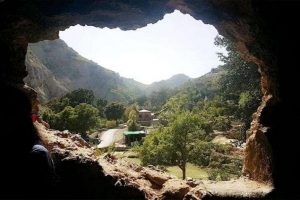
When people find out that I live on a homestead, they often ask me, “Are you going to live off-grid?” or “Is the goal to be fully self-sufficient?” A few moments spent on social media makes the source of these questions clear.
There is no shortage of Instagram and YouTube influencers selling freeze-dried food along with the promise that watching their content will help viewers live lives of fulfillment and rugged individualism.
And I’m here for it. I love watching videos about canning, foraging, and regenerative agriculture techniques. I have watched so many time-lapse videos of men building cabins in the woods that I was eventually inspired to build a greenhouse and a pergola in my own backyard.
That said, the deeper I go into homestead life, the more I realize that my household will never be fully self-sufficient. In fact, I’m not sure that’s even possible.
Take my pergola, for example. I built it myself in the hope that it would give us a shady spot in which to sit and enjoy the garden on hot, summer days. Since I designed and built it by myself, one might think that this is an example of the self-sufficiency that homesteaders are supposed to embody.
Actually, the opposite is true.
I purchased all of the lumber that I used in this project at the hardware store. I did not wield the chainsaw that felled the trees for it. It was not my saw that shaped it into boards or my trucks that delivered it to the store. Someone went home with a sore back after loading the boards up for display at the store, but that wasn’t me.
A nearly infinite number of people were involved in making the lumber available for purchase, and if any one of them had failed at their job, my project would have been impossible to complete.
Of course, we can’t forget the natural world in this endless chain of karmic causes and effects. The trees had to grow straight and tall prior to the lumberjacks’ arrival. They were nourished by the Sun and countless microbes in the soil. Fungi helped them to absorb nutrients from that same soil and rain clouds fed them life-giving water.
If any one of nature’s little helpers had called in sick for a day, my project would have been impossible to complete.
Finally, we have the builders. Carpenters such as Larry Haun, who were kind enough to write books and post videos on the internet detailing the intricacies of angle-bracing, deck-building, and wall-framing.
If any one of them had been a little less compassionate, unwilling to share their knowledge with the world, my project would have been impossible to complete.
I could go on like this for every project that I have completed on the homestead. My animal shelters, my pergola, my greenhouse, and my garden bed all serve as daily reminders of how much my life depends on the kindness of others.
The Buddha discusses this state of being in the Avatamsaka Sutra using the story of Indra’s net. The net is described as being made of an infinite number of jewels.
If one looks closely at any individual jewel in the net, they find that it has its own, individual nature. And it also reflects the nature of every other jewel in the net. Thus, each of them has an existence that is both independent of the other jewels in the net while also eternally tied to them.
This is true of the gemstones in Indra’s net and it is also true of all living creatures. Yes, we are all independent in our own way. I played a role in building my homestead into what it is, and I have the calluses to prove it.
But my work is a reflection of all of the builders, gardeners, and homesteaders that came before me. Similarly, every person who goes out into the world each day striving to leave things a little better than they found them is both an individual and a reflection of all the people, places, and things that have led them to that moment.
In this way, the work I do on the homestead does not move me toward a life that is more self-sufficient. Instead, it serves as a constant reminder that my life and the work that goes into it is an opportunity for immense gratitude.
I’m grateful that I get to be a “jewel” in Indra’s infinite net, and I’m grateful to all the other jewels that allow me to reflect a bit of their light in each moment. I marvel at the vast nature of time and space, stretching in every direction.
And I feel an overwhelming sense of awe when I realize that it can all be manifested in few pieces of wood.
Namu Amida Butsu
Related features from BDG
The Grapes of Metta
Why I Study Zen Philosophy
Energy as a Way of Life: Japanese Buddhist Priests Reflect on the Ukraine and Sri Lanka Crises While Calling for Local Energy Self-Sufficiency
An Alternative Education for Self-Sufficiency












